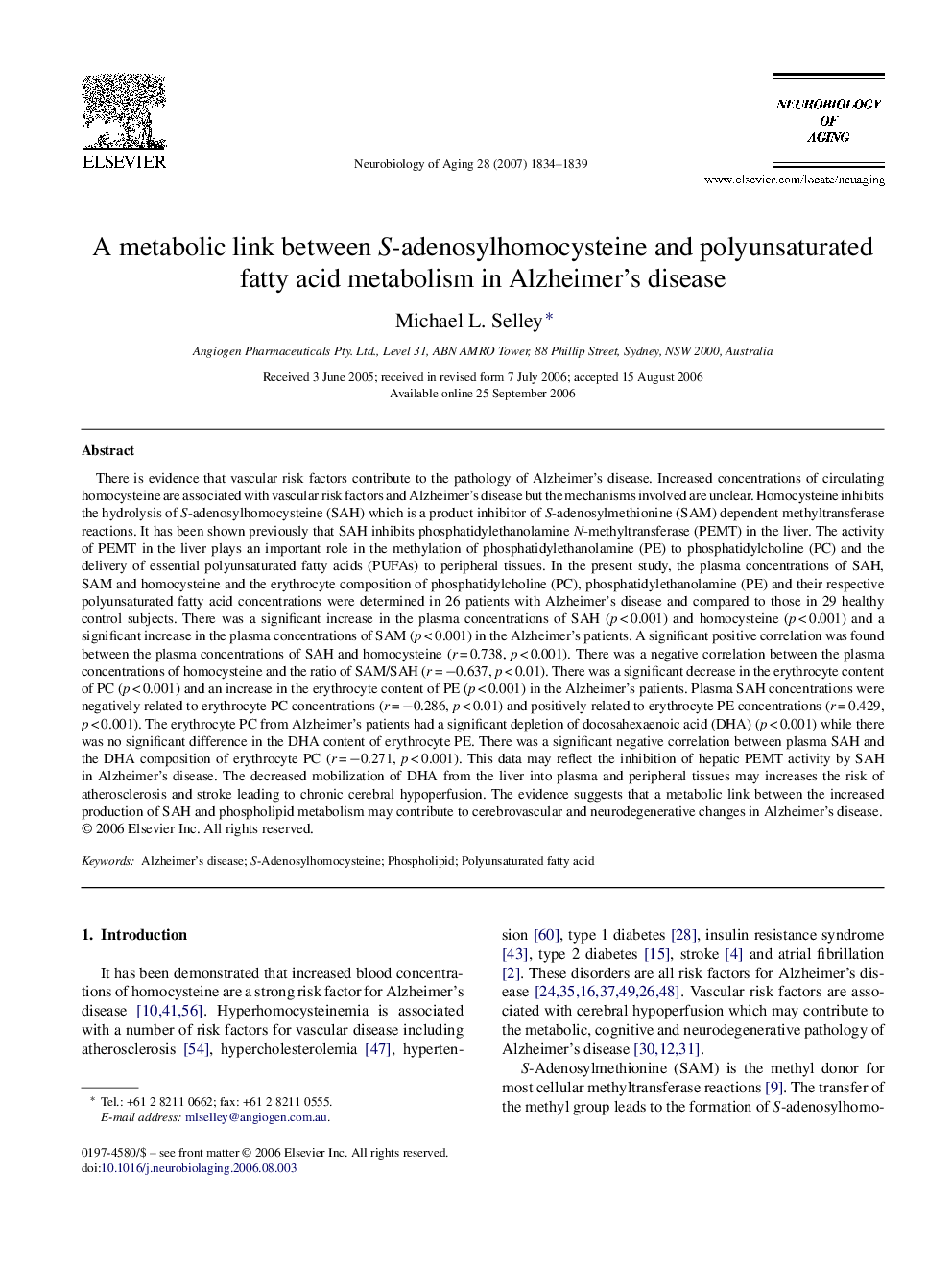| Article ID | Journal | Published Year | Pages | File Type |
|---|---|---|---|---|
| 331342 | Neurobiology of Aging | 2007 | 6 Pages |
There is evidence that vascular risk factors contribute to the pathology of Alzheimer's disease. Increased concentrations of circulating homocysteine are associated with vascular risk factors and Alzheimer's disease but the mechanisms involved are unclear. Homocysteine inhibits the hydrolysis of S-adenosylhomocysteine (SAH) which is a product inhibitor of S-adenosylmethionine (SAM) dependent methyltransferase reactions. It has been shown previously that SAH inhibits phosphatidylethanolamine N-methyltransferase (PEMT) in the liver. The activity of PEMT in the liver plays an important role in the methylation of phosphatidylethanolamine (PE) to phosphatidylcholine (PC) and the delivery of essential polyunsaturated fatty acids (PUFAs) to peripheral tissues. In the present study, the plasma concentrations of SAH, SAM and homocysteine and the erythrocyte composition of phosphatidylcholine (PC), phosphatidylethanolamine (PE) and their respective polyunsaturated fatty acid concentrations were determined in 26 patients with Alzheimer's disease and compared to those in 29 healthy control subjects. There was a significant increase in the plasma concentrations of SAH (p < 0.001) and homocysteine (p < 0.001) and a significant increase in the plasma concentrations of SAM (p < 0.001) in the Alzheimer's patients. A significant positive correlation was found between the plasma concentrations of SAH and homocysteine (r = 0.738, p < 0.001). There was a negative correlation between the plasma concentrations of homocysteine and the ratio of SAM/SAH (r = −0.637, p < 0.01). There was a significant decrease in the erythrocyte content of PC (p < 0.001) and an increase in the erythrocyte content of PE (p < 0.001) in the Alzheimer's patients. Plasma SAH concentrations were negatively related to erythrocyte PC concentrations (r = −0.286, p < 0.01) and positively related to erythrocyte PE concentrations (r = 0.429, p < 0.001). The erythrocyte PC from Alzheimer's patients had a significant depletion of docosahexaenoic acid (DHA) (p < 0.001) while there was no significant difference in the DHA content of erythrocyte PE. There was a significant negative correlation between plasma SAH and the DHA composition of erythrocyte PC (r = −0.271, p < 0.001). This data may reflect the inhibition of hepatic PEMT activity by SAH in Alzheimer's disease. The decreased mobilization of DHA from the liver into plasma and peripheral tissues may increases the risk of atherosclerosis and stroke leading to chronic cerebral hypoperfusion. The evidence suggests that a metabolic link between the increased production of SAH and phospholipid metabolism may contribute to cerebrovascular and neurodegenerative changes in Alzheimer's disease.
